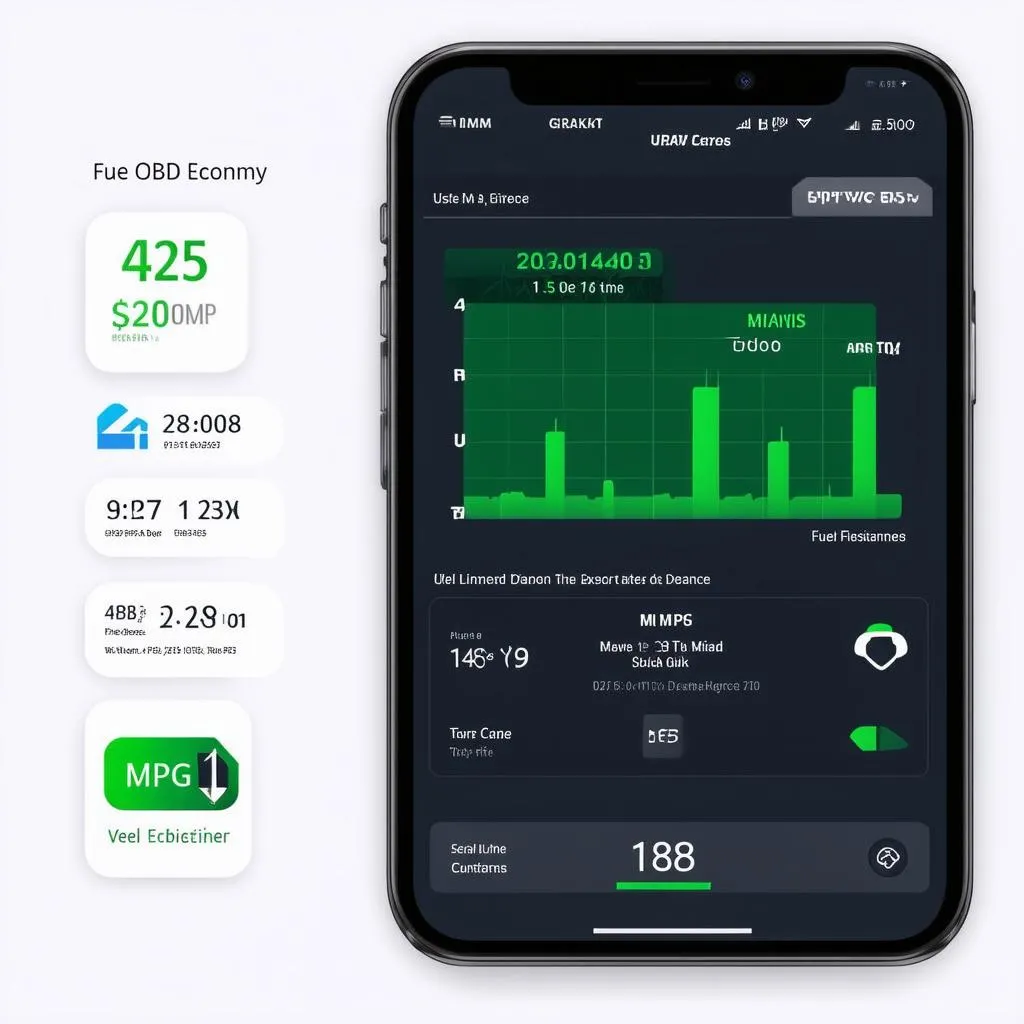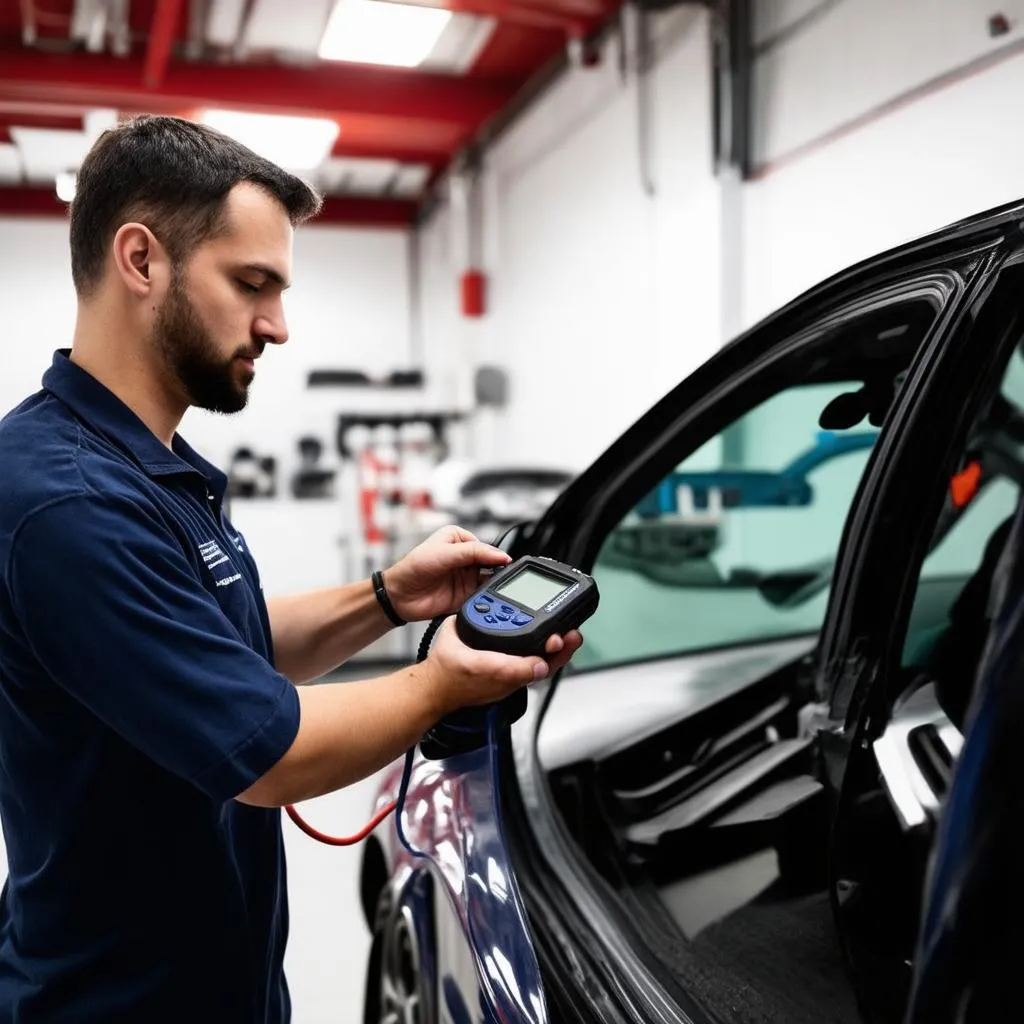Have you ever been stuck in traffic, watching your fuel gauge plummet faster than your patience? Or maybe you’re just trying to be more environmentally conscious and save some money at the pump? Whatever your reason, understanding your car’s fuel economy is key, and that’s where OBD apps come in handy. But with so many options out there, finding the Best Obd Android App For Fuel Economy can feel like searching for a needle in a haystack.
Don’t worry, we’ve got you covered! This article will guide you through everything you need to know, from the basics of OBD technology to the top-rated apps that can help you squeeze more miles from every gallon.
Understanding the Power of OBD and Fuel Economy
Before we dive into the apps themselves, let’s take a quick look at why OBD is such a game-changer for fuel efficiency.
OBD: Your Car’s Secret Language
Imagine being able to tap into your car’s brain and understand exactly what’s going on under the hood. That’s precisely what OBD (On-Board Diagnostics) technology allows you to do. By connecting your Android phone to your car’s OBD-II port (usually located under the steering wheel), you unlock a treasure trove of data, including real-time fuel consumption, engine performance, and potential issues.
From a mechanic’s perspective, access to this data is invaluable for diagnosing problems and optimizing vehicle performance. “With OBD, we’re not just guessing anymore. We have concrete data to pinpoint inefficiencies and help car owners improve their fuel economy,” says Michael Jones, a senior mechanic at a Ford dealership in Chicago.
From an economic standpoint, improving your fuel economy translates to direct savings at the pump. In a world of fluctuating gas prices, this can make a significant difference in your monthly budget.
And let’s not forget the environmental impact. By optimizing your fuel consumption, you reduce your carbon footprint and contribute to a greener planet.
Best OBD Android Apps for Fuel Economy: Our Top Picks
Now for the moment you’ve been waiting for – the best OBD Android apps for fuel economy. We’ve tested numerous apps and narrowed it down to the ones that stand out from the crowd:
1. Torque Pro
Torque Pro is a veteran in the OBD app world and for good reason. It’s incredibly versatile, offering a vast array of features, including real-time fuel economy tracking, customizable dashboards, and fault code reading. The ability to create custom PIDs (Parameter IDs) to monitor specific data points makes it a favorite among car enthusiasts and mechanics alike.
Key Features:
- Real-time fuel consumption gauges and graphs
- Customizable dashboards for personalized data display
- Fault code reading and clearing
- GPS-based trip logging for mileage tracking
Price: Paid app with a one-time purchase
2. Fuelly
Fuelly takes a more focused approach, specializing in tracking fuel consumption and expenses. It allows you to manually log your fill-ups, track mileage, and calculate your average fuel economy. While it doesn’t offer the extensive diagnostic features of Torque Pro, its simplicity and user-friendly interface make it an excellent choice for casual users.
Key Features:
- Manual fuel log for tracking fill-ups and expenses
- Mileage tracking and fuel economy calculation
- Vehicle maintenance reminders
- Community-based fuel price sharing
Price: Free with optional premium subscription
3. OBD Fusion
OBD Fusion strikes a great balance between functionality and ease of use. It provides real-time data monitoring, diagnostic trouble codes, and customizable gauges, making it suitable for both beginners and experienced users. Its compatibility with a wide range of OBD-II adapters adds to its appeal.
Key Features:
- Real-time data monitoring for various engine parameters
- Diagnostic trouble code reading and clearing
- Customizable gauges for personalized data display
- Support for a wide range of OBD-II adapters
Price: Paid app with a one-time purchase
 OBD App Interface
OBD App Interface
Tips for Maximizing Fuel Economy with OBD Apps
Choosing the right app is just the first step. Here are a few additional tips to help you get the most out of your OBD app and improve your fuel efficiency:
1. Monitor Your Driving Habits
OBD apps can reveal a lot about your driving style and its impact on fuel consumption. “Many drivers are surprised to see how their acceleration, braking, and speed fluctuations affect their mileage,” says automotive expert, Sarah Miller, author of “The Eco-Friendly Driver’s Handbook.” By identifying areas for improvement, such as smoother acceleration and coasting to stops, you can make conscious changes that translate to real savings.
2. Stay on Top of Vehicle Maintenance
Regular vehicle maintenance is crucial for optimal fuel economy. OBD apps can help you stay on track with maintenance reminders and by alerting you to potential issues early on. Addressing problems like a clogged air filter or worn spark plugs can significantly improve your fuel efficiency.
3. Combine OBD Data with Other Fuel-Saving Techniques
While OBD apps provide valuable insights, it’s essential to combine them with other fuel-saving techniques for maximum impact. Consider these strategies:
- Reduce unnecessary weight: Remove any heavy items from your vehicle that you don’t need.
- Check tire pressure regularly: Under-inflated tires can significantly decrease fuel economy.
- Plan your routes efficiently: Avoid rush hour traffic and map out routes with fewer stops and starts.
 Mechanic Using OBD Scanner
Mechanic Using OBD Scanner
FAQs about OBD Apps and Fuel Economy
Here are answers to some frequently asked questions about OBD apps and their role in improving fuel efficiency:
Q: Will using an OBD app void my car’s warranty?
A: No, using an OBD app will not void your car’s warranty. These apps simply read data from your vehicle’s computer and do not make any modifications to its systems.
Q: Do I need an internet connection to use an OBD app?
A: Most OBD apps do not require an internet connection to function once they are connected to your vehicle’s OBD-II port. However, some features, such as map integration or fuel price updates, may require internet access.
Q: Are OBD apps compatible with all cars?
A: Almost all gasoline-powered cars manufactured after 1996 in the US and 2001 in Europe are equipped with an OBD-II port, making them compatible with OBD apps. However, it’s always best to double-check your vehicle’s documentation or consult with a mechanic to confirm compatibility.
Explore More Automotive Tech Tips
Interested in learning more about automotive technology and maximizing your car’s performance? Check out these related articles on our website:
- Best OBD-II Code Scanner: Diagnose Car Problems Like a Pro
- Top Android OBD Bluetooth App for Your Car
Need Help with OBD Apps or Diagnostics? We’re Here for You!
We understand that navigating the world of automotive technology can be overwhelming. That’s why our team of experts is here to help you every step of the way. Whether you need assistance choosing the right OBD app, installing it on your Android device, or interpreting the data it provides, don’t hesitate to reach out.
Contact us on WhatsApp at +84767531508 for personalized support and expert advice. Let us help you unlock the full potential of your vehicle and enjoy a smoother, more fuel-efficient driving experience.